In nature, there are more than 1200 varieties of craton flower, and only a small part of them can take root at home. A plant can take the form of a tree, bush or grass, and depending on the habitat, craton, also known as codium, can change not only color, but also the shape of leaves. The plant is picky in care, so if you want to grow a healthy and beautiful flower, you should adhere to certain rules.
Material Content:
Varieties and types
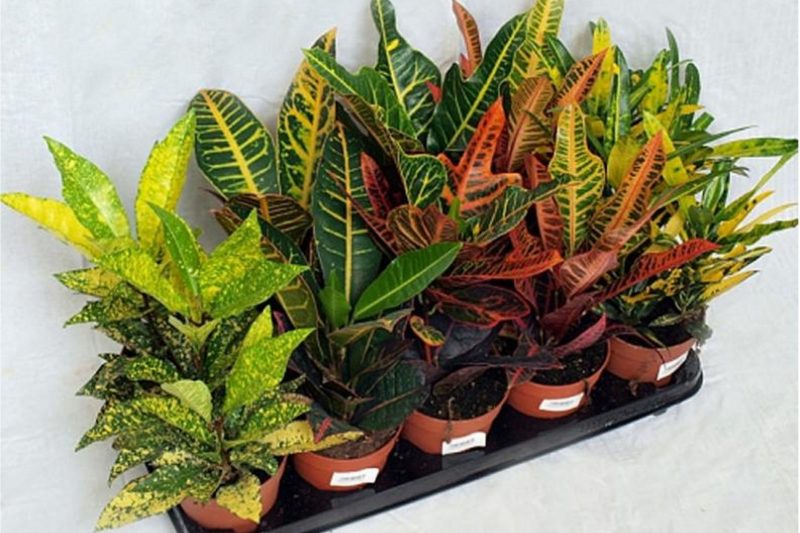
Among the most common plant species include:
- Gold Dust is one of the most beautiful varieties. It has a deep green foliage, along which numerous yellow blotches are observed.
- Excellence is a classic version of croton. It has wide foliage, the color of which can change from green to yellow, sometimes with a reddish tint. In order for the plant to please with saturated colors, it needs to provide a sufficient amount of light, but at the same time avoid direct sunlight.
- Norma - one of the common types of flower, has a compact shape and wide leaves of a reddish hue. Due to the fact that he loves a large amount of moisture, he is advised to regularly spray with water.
- Gold Star - the name of the plant translates as "golden star". All thanks to its unusual shape and color - long and narrow leaves stick out in all directions. Color - yellow with green splashes or green with yellow splashes.
- Petra is one of the most unusual representatives of croton.The color is bright, on one plant you can find red, yellow, orange and green leaves.
- Aiston - can be safely attributed to the number of unusual varieties. The leaves look in the opposite direction, on one plant they can be painted in a wide variety of colors.
- Golden Ring - the plant has a neat appearance, the leaves are oblong and small. The color is bright, combining yellow and green shades.
Kraton flower: the nuances of growing
Croton, which is grown at home, is one of the most moody plants.
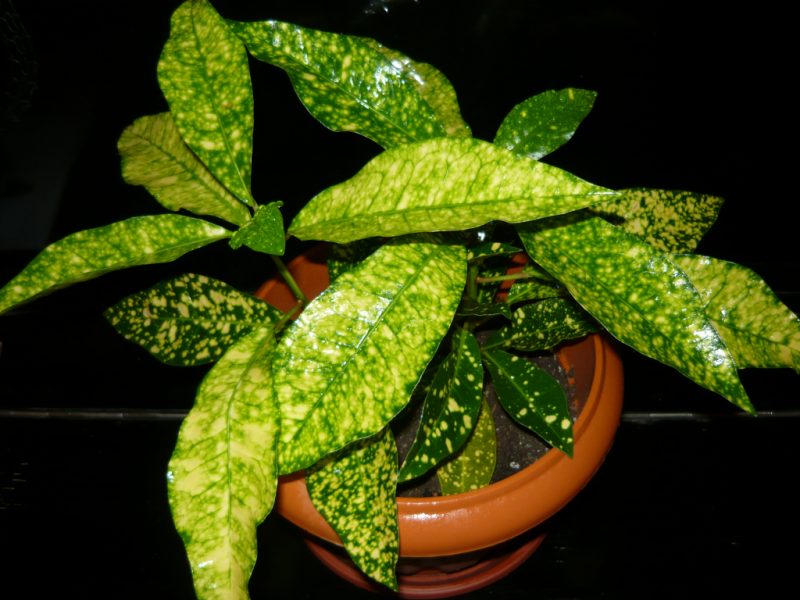
There are several nuances in care that every grower should know about:
- This is a moisture-loving plant that requires regular watering. Its leaves must always be sprayed from a spray bottle or moistened with a sponge.
- During flowering, the flower loses a lot of strength and energy. If you are going to engage in the reproduction of croton, you will have to remove all peduncles.
- The plant is poisonous and can cause vomiting or diarrhea. Use gloves when caring for him.
Home Care
To make croton pleasing with its decorative look over the years, adhere to the basic rules for caring for it.
Soil requirements
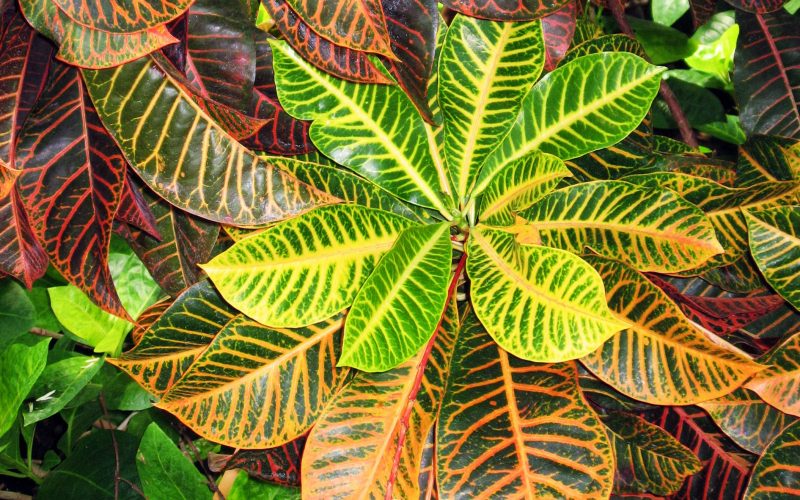
High soil quality is the key to healthy growth. In order for the plant to feel comfortable at home, it is worth preparing for it loose and drained soil. The soil should be breathable, with an average acidity. The substrate can be made independently. To do this, take in equal amounts of sand, turf, leaf and peat land. Before you plant a plant, you need to do a disinfection of the soil. To do this, pour it with a weak solution of potassium permanganate.
Optimal conditions
To grow croton was an exciting activity, he needs to create optimal conditions for growth. First of all, this concerns the temperature regime. The plant is among the heat-loving, so the temperature in the room should not be below +17 degrees. It is best that it be within + 22 ... + 23. Low temperatures will lead to the death of the root system and lethargy of the leaves. Also eliminate drafts and sudden fluctuations in humidity.
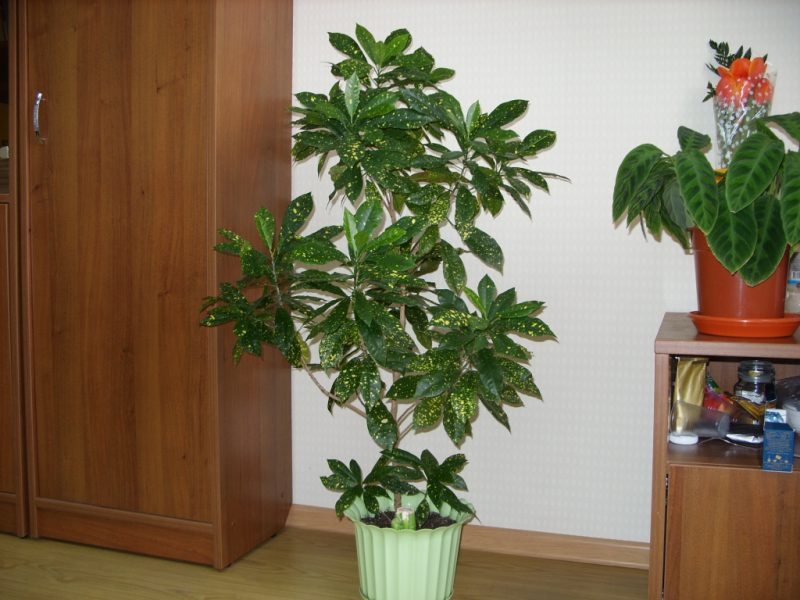
Flowers should stand on window sills with good lighting, but at the same time they do not like direct sunlight, as this can cause a burn.
In winter, pots can be put on the western or southern windows, in summer - on the eastern or western. Insufficient lighting will cause the plant to lose its decorative color and the leaves will turn green.
Watering a flower

Abundant watering is required only in the spring and summer, as during this period the moisture evaporates with maximum force. In winter, 1-2 waterings per week are enough, spraying leaves from the spray is also allowed. Be sure to use standing warm water. Cold tap water can cause leaf death in a short time. Also, keep an adequate level of humidity in the room, as croton is a tropical plant. The flower leaves will “say” about the lack of water, they will become lethargic and will hang on the walls of the pot.
Fertilizer and fertilizer
Like other indoor plants, croton periodically requires fertilizers of mineral origin.
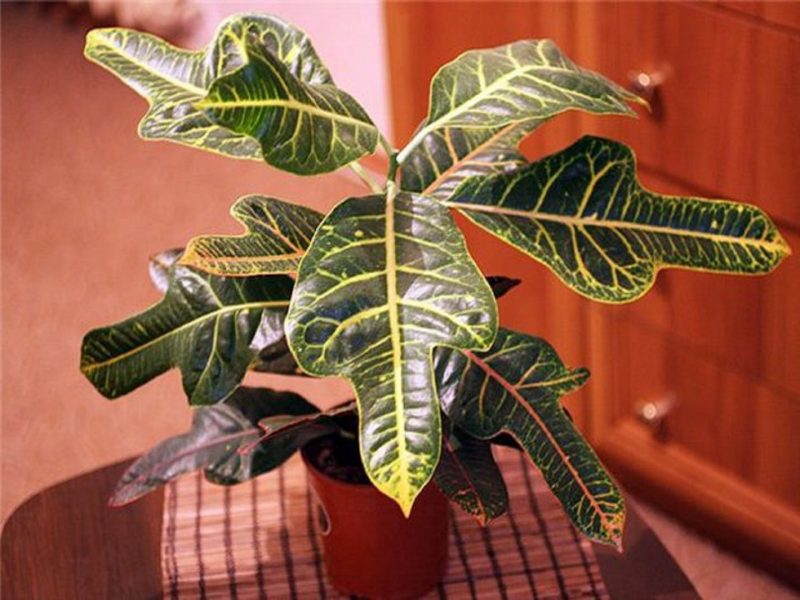
- It is most correct to feed a flower during the growing season - spring-summer time.
- Feeding is recommended 1 time per week.
- Use only those fertilizers that are designed for tropical plants.
- The maximum effect can be obtained from liquid fertilizers, they are usually diluted with water.
In addition, tea brewing, coffee grounds or banana peels can be used as top dressing. Thickening or tea leaves need to be made 1 time in 2 weeks, previously steaming them. After chopping, the banana peel is placed under the topsoil, and over time it will begin to decompose.
Trimming
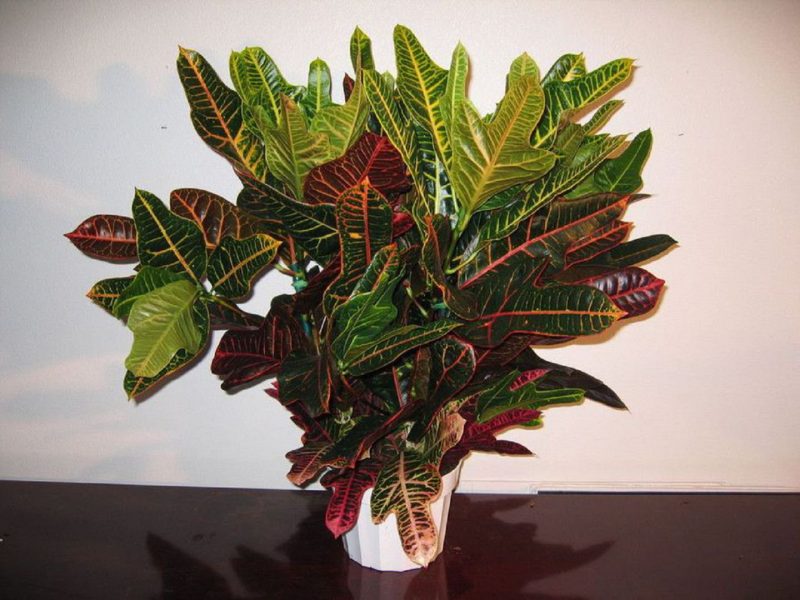
The main purpose of pruning is to give the plant a more attractive look.It is better to spend it in the spring. The flower tolerates this procedure painlessly, which allows you to easily form the desired shape of the bush. It is done very simply: it is necessary to cut off the tops of 15 centimeters. It is immediately sent to water for further reproduction of the croton. Dried or parasitized leaves are also cut. The rest will begin to branch and turn into a pretty bush.
Do not forget that the plant is poisonous, so it is worthwhile to prune with extreme caution. Croton juice can be harmful.
How to transplant?
A young plant is characterized by rapid growth. To keep this process going with the same intensity, it is advised to transplant the flower every six months. Over time, transplantation will be required much less often - as the container is filled with the root system.
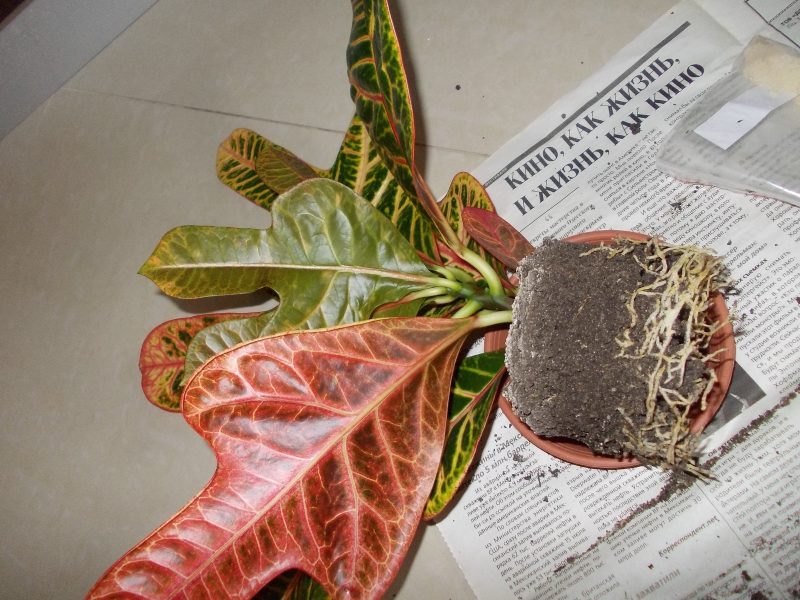
- For each subsequent process, take a container that will be 2 centimeters wider than the previous one.
- The maximum pot size can be 25 cm, after which the flower is not necessary to transplant. However, for comfortable growth, the topsoil will need to be renewed annually.
- Try to transplant the plant into the soil each time, as close as possible to the natural habitat.
After you get the croton out of the pot, do not remove the remnants of the old soil from the root system. Transfer the plant to a new pot and add the required amount of substrate. There must be a drainage layer at the bottom. After transplanting, it is better to put the codium in the shade and at first it will need abundant watering.
Winter care
Caring for a craton in winter is practically no different from any other period. Experts recommend putting the pot with the plant on the southern window sill, slightly reduce watering and feed more than 1 time per month.
Pest and Disease Control
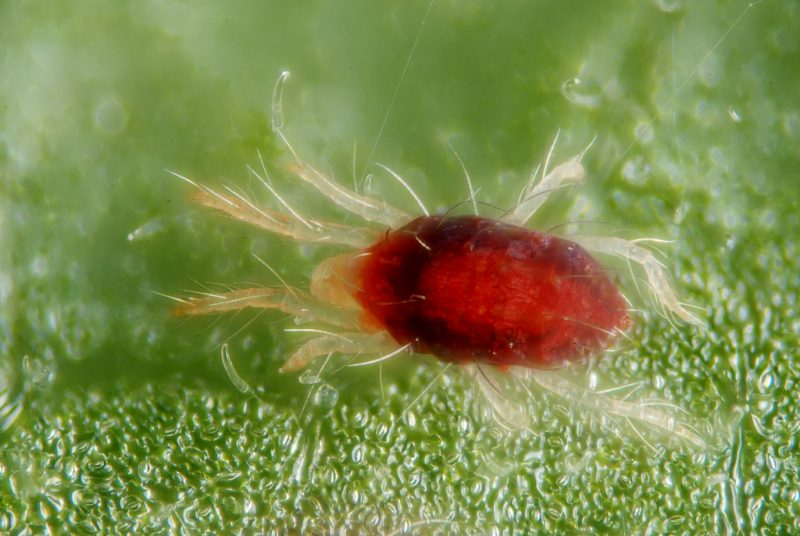
The main enemies of the croton are the spider mite and the insect shield.
- The first signs of a tick are yellowing and falling leaves. The pest can also be seen if you look at the leaves from the bottom. To combat the parasite, it is advised to use Actellic.
- As a result of a lesion with scabies, round shields of dark brown color will begin to form on the leaves. In this situation, the plant is advised to move to a cooler room, but with a high level of humidity. An effective drug is Karbofos.
From diseases the flower is affected by gray rot and soot fungus. The latter disease is not particularly dangerous, but due to damage to them, the plant does not receive enough oxygen and weakens. If possible, try to collect all the parasites and wash the plant with water using soap.
Gray rot affects the stem and young leaves. As a result of the disease, large brown spots appear. It is necessary to cut off all affected leaves and cuttings and remove moldy soil. Treat the flower with copper chloride and reduce watering.
Kraton lowered, drops leaves, dries

When growing a croton, a grower may encounter some problems:
- The plant lowers the leaves. This is due to the fact that its root system freezes, as a result of which it ceases to absorb a sufficient amount of moisture. Move the pot to a warmer place with good lighting, arrange regular watering and spraying, stop fertilizing. On top of the flower is recommended to wear a plastic bag.
- The plant drops leaves. There is nothing wrong with the fact that the flower drops the lower leaves during the growth period. A bad sign would be the massive loss of hardwood. Such a picture can be observed as a result of low air humidity, draft, insufficient watering and sharp fluctuations in temperature.
- The plant dries. A natural process when the lower leaves dry out and over time the lower part of the trunk is exposed.If the edges of the leaves begin to dry, then this indicates a low humidity and uncomfortable temperature. The plant urgently needs to be moved to a warmer room.
Despite the fact that codium is classified as a poisonous plant, it is able to create a special atmosphere on your windowsill. And with proper care, he will continue to delight with his decorative flowering for many years.












